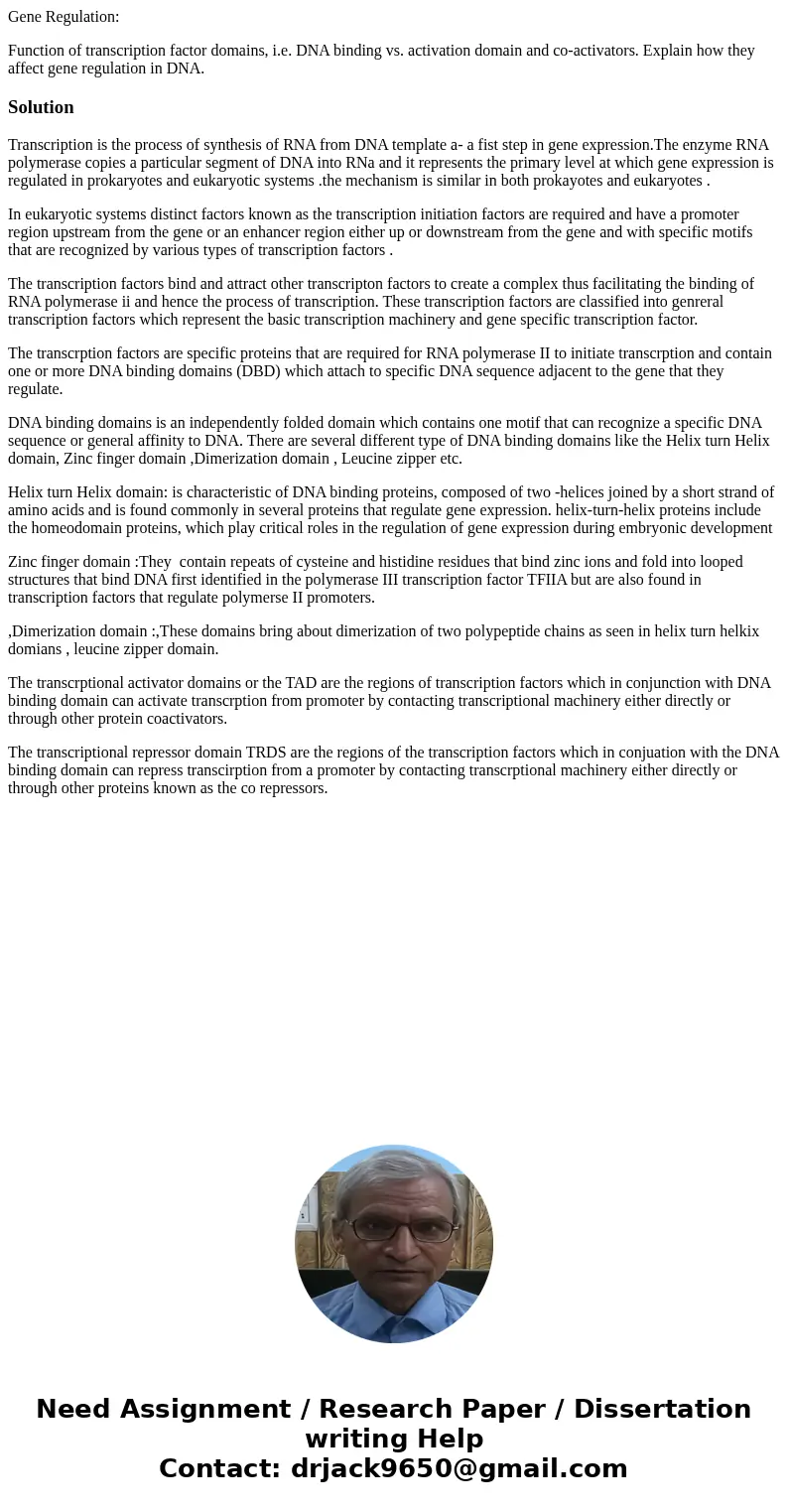Gene Regulation Function of transcription factor domains ie
Gene Regulation:
Function of transcription factor domains, i.e. DNA binding vs. activation domain and co-activators. Explain how they affect gene regulation in DNA.
Solution
Transcription is the process of synthesis of RNA from DNA template a- a fist step in gene expression.The enzyme RNA polymerase copies a particular segment of DNA into RNa and it represents the primary level at which gene expression is regulated in prokaryotes and eukaryotic systems .the mechanism is similar in both prokayotes and eukaryotes .
In eukaryotic systems distinct factors known as the transcription initiation factors are required and have a promoter region upstream from the gene or an enhancer region either up or downstream from the gene and with specific motifs that are recognized by various types of transcription factors .
The transcription factors bind and attract other transcripton factors to create a complex thus facilitating the binding of RNA polymerase ii and hence the process of transcription. These transcription factors are classified into genreral transcription factors which represent the basic transcription machinery and gene specific transcription factor.
The transcrption factors are specific proteins that are required for RNA polymerase II to initiate transcrption and contain one or more DNA binding domains (DBD) which attach to specific DNA sequence adjacent to the gene that they regulate.
DNA binding domains is an independently folded domain which contains one motif that can recognize a specific DNA sequence or general affinity to DNA. There are several different type of DNA binding domains like the Helix turn Helix domain, Zinc finger domain ,Dimerization domain , Leucine zipper etc.
Helix turn Helix domain: is characteristic of DNA binding proteins, composed of two -helices joined by a short strand of amino acids and is found commonly in several proteins that regulate gene expression. helix-turn-helix proteins include the homeodomain proteins, which play critical roles in the regulation of gene expression during embryonic development
Zinc finger domain :They contain repeats of cysteine and histidine residues that bind zinc ions and fold into looped structures that bind DNA first identified in the polymerase III transcription factor TFIIA but are also found in transcription factors that regulate polymerse II promoters.
,Dimerization domain :,These domains bring about dimerization of two polypeptide chains as seen in helix turn helkix domians , leucine zipper domain.
The transcrptional activator domains or the TAD are the regions of transcription factors which in conjunction with DNA binding domain can activate transcrption from promoter by contacting transcriptional machinery either directly or through other protein coactivators.
The transcriptional repressor domain TRDS are the regions of the transcription factors which in conjuation with the DNA binding domain can repress transcirption from a promoter by contacting transcrptional machinery either directly or through other proteins known as the co repressors.

 Homework Sourse
Homework Sourse